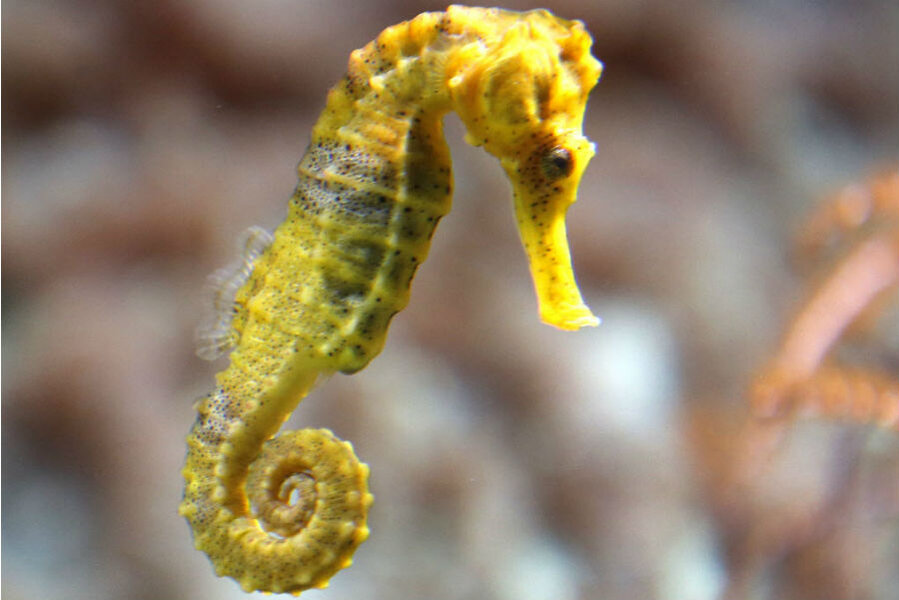What makes the seahorse so unique?
Loading...
For the first time, scientists have unraveled the genetic secrets of one of the most peculiar fish in the sea: the seahorse.
An international team of researchers has fully sequenced the Southeast Asian tiger tail seahorse, named for its distinctive yellow-and-black striped tail.
In analyzing the complete genome, scientists have found insights into some of the creature's most unusual traits, including male brooding, the researchers describe in the current issue of Nature. Several repeated genes and other missing ones provide clues as to why the seahorse is so distinctive from even its most closely related evolutionary cousins.
The tiger tail seahorse, or Hippocampus comes, is a bizarre little creature with a distinctive snout and curlicue body that reaches a maximum height of 4 inches. Unlike most fish, seahorses have no teeth; instead, they suck in food through their snout. The genetic explanation? The tiger tail lacks genes associated with the creation of enamel, a key component of teeth.
But that's not their only oddity. Seahorses swim vertically, lack pelvic fins, have bony plates over their bodies, and move their eyeballs independently. Perhaps most distinctively, the males carry babies and give birth to them instead of females.
"They are such iconic animals, one of the examples of the exuberance of evolution," said evolutionary biologist and genome researcher Axel Meyer of Germany's University of Konstanz, one of the researchers in the study, reported Reuters.
The researchers found that seahorses lacked a gene associated with pelvic fins, a feature in fish usually considered as essential as legs in a land mammal. The scientists found that when this gene was deactivated in zebrafish, the zebrafish also lost their pelvic fins, which could explain why seahorses propel themselves with a small fin on their backs and steer with small pectoral fins on their heads.
The scientists also found that a gene family associated with egg hatching was expanded in the seahorse, which could explain the male brooding pouch.
But sequencing a genome only presents possibilities, not proof, say other scientists.
"Most of what they report is a correlation; you can't say for sure that's what causes it," said Tony Wilson, a professor at Brooklyn College in New York who was not involved in the study, reported the Los Angeles Times.
Another strange feature that the scientists could not explain is the seahorse's evolutionary speed. H. comes had the fastest rate of molecular evolution among any teleost (a large class of animal that contains most fish) whose genome has been studied to date.
But with the new, completed genome sequence, scientists now have an important tool for learning more about one of nature's least understood creatures.
"As a seahorse biologist, it is terrifically exciting," Dr. Wilson told the Times. "It brings the field into the 21st century."
This report contains material from Reuters.






